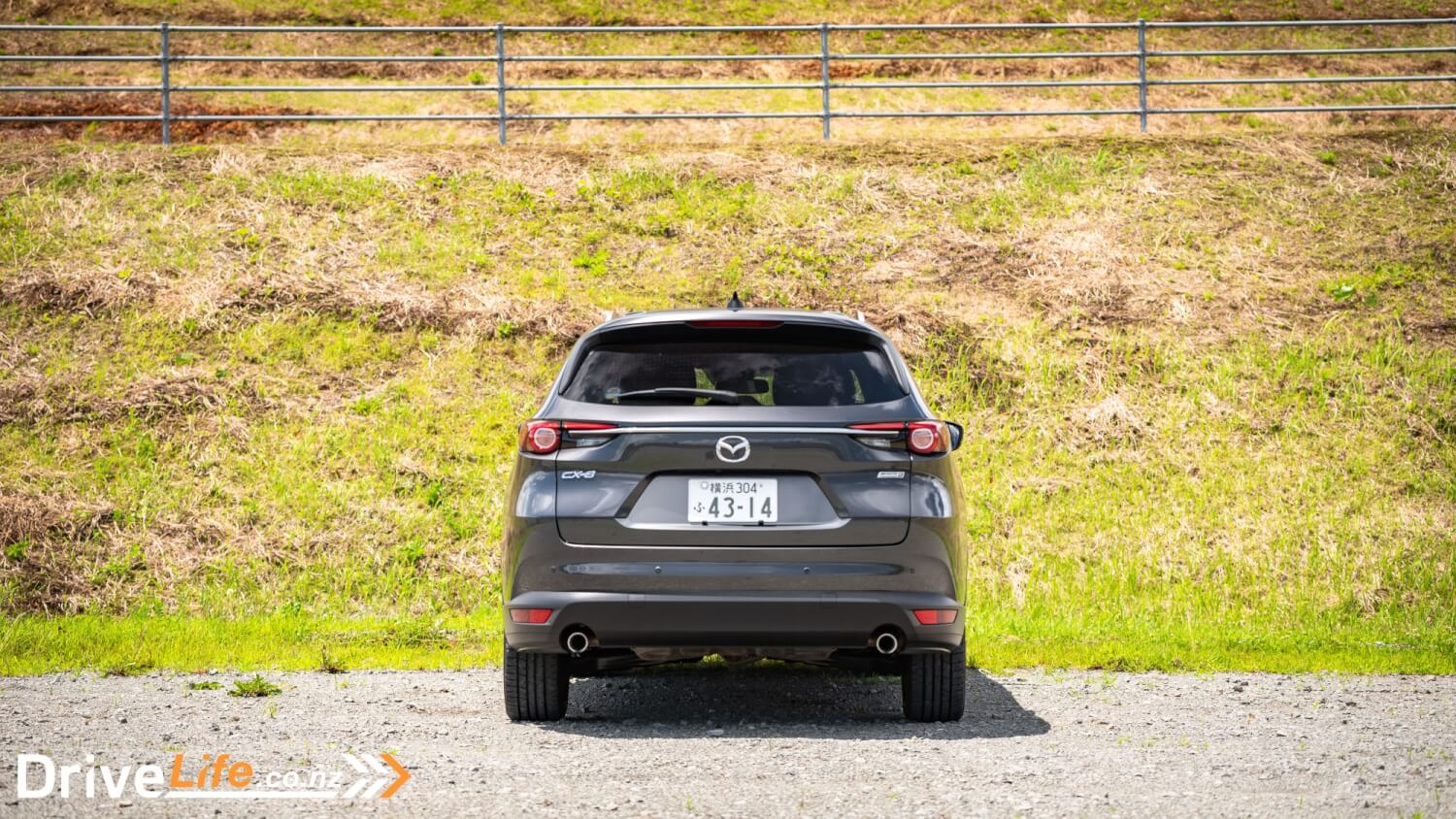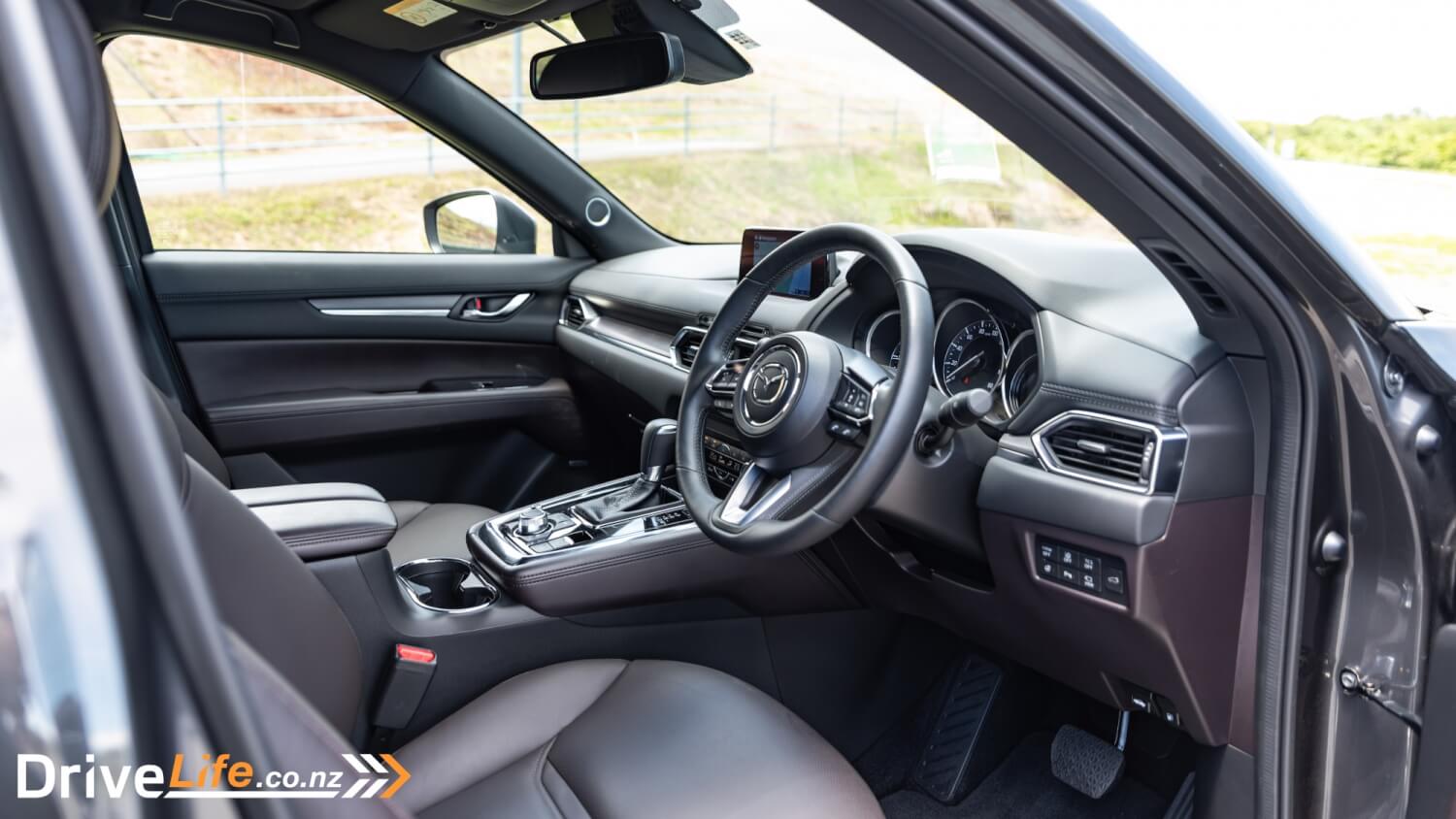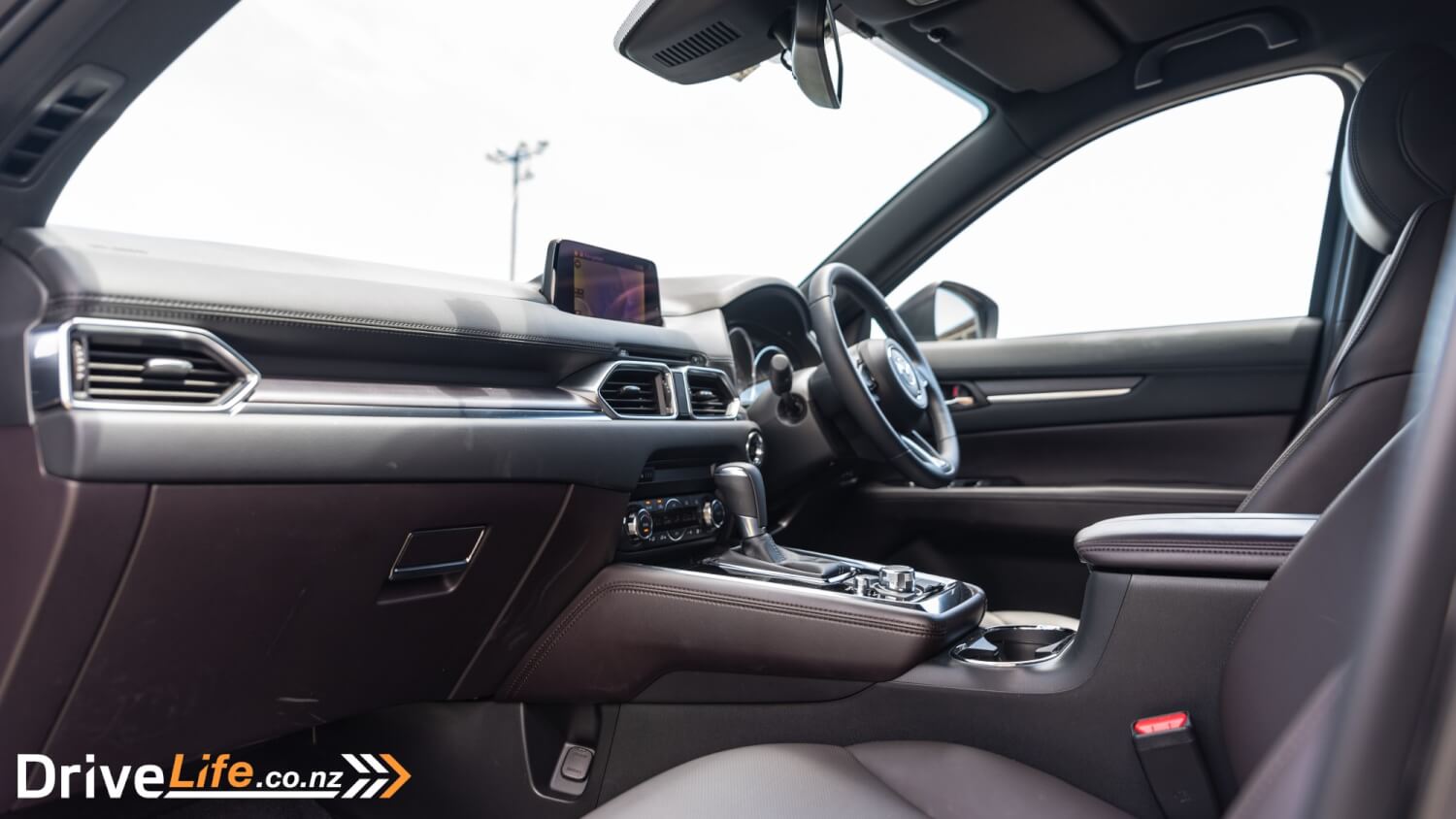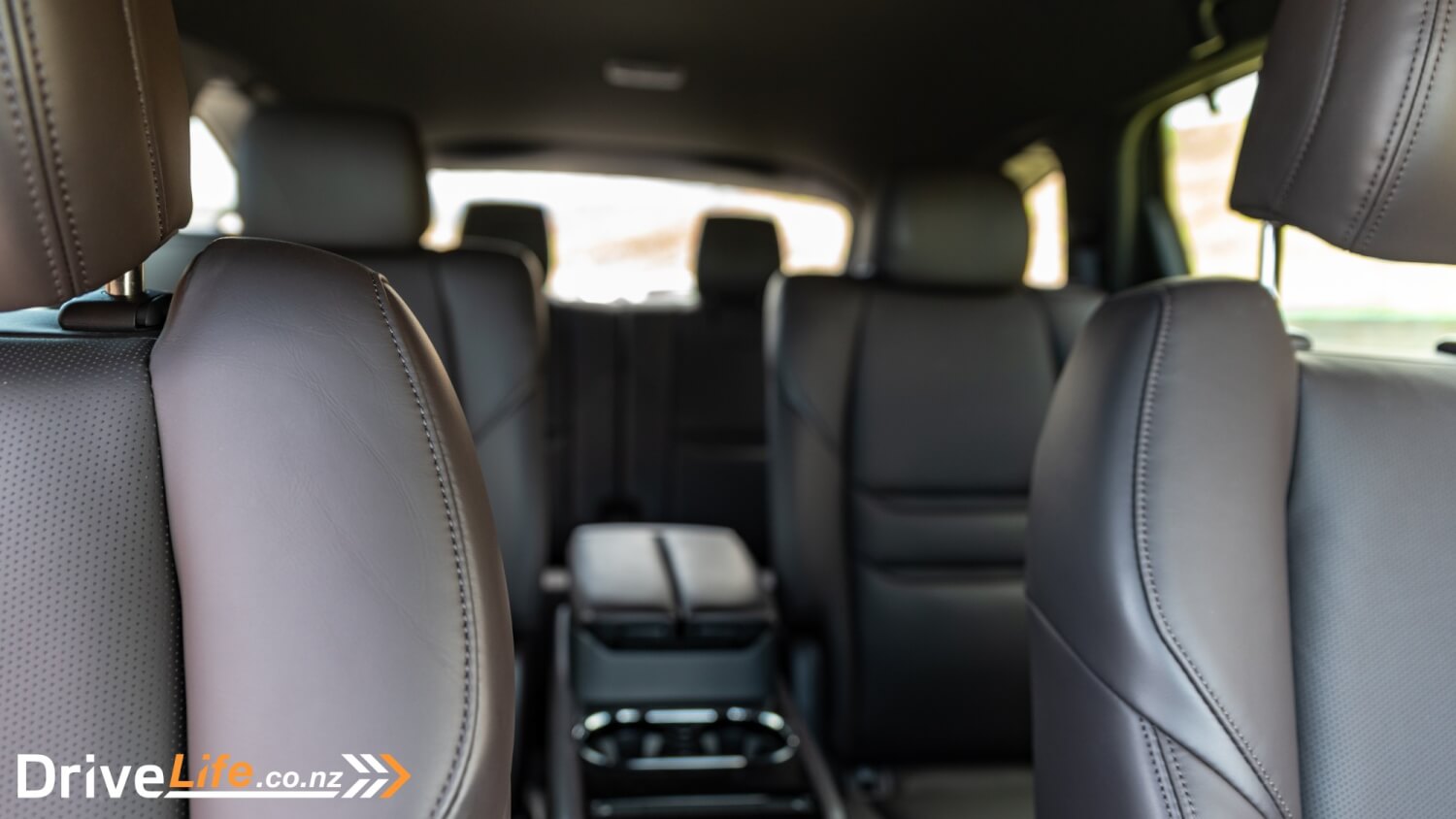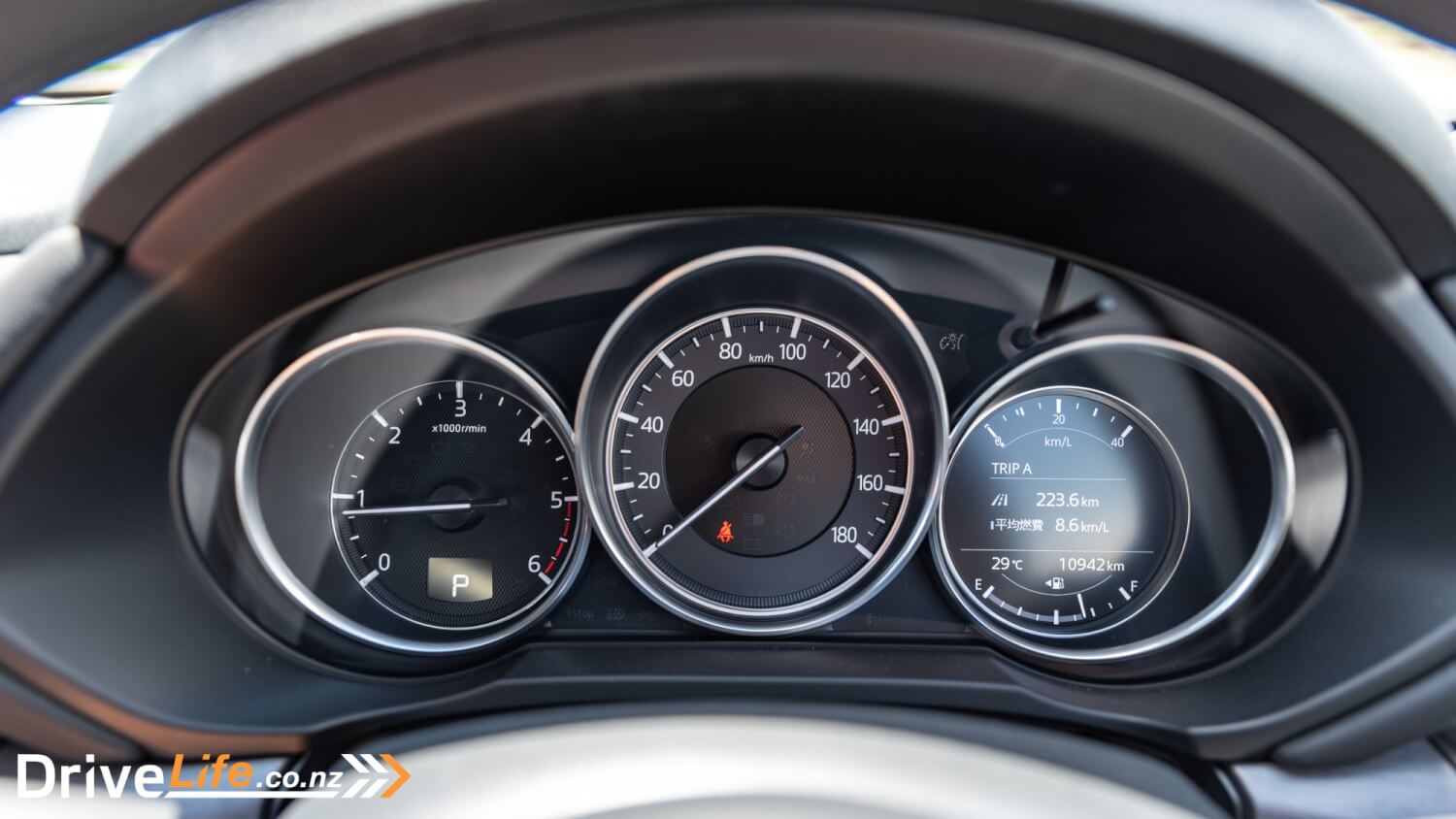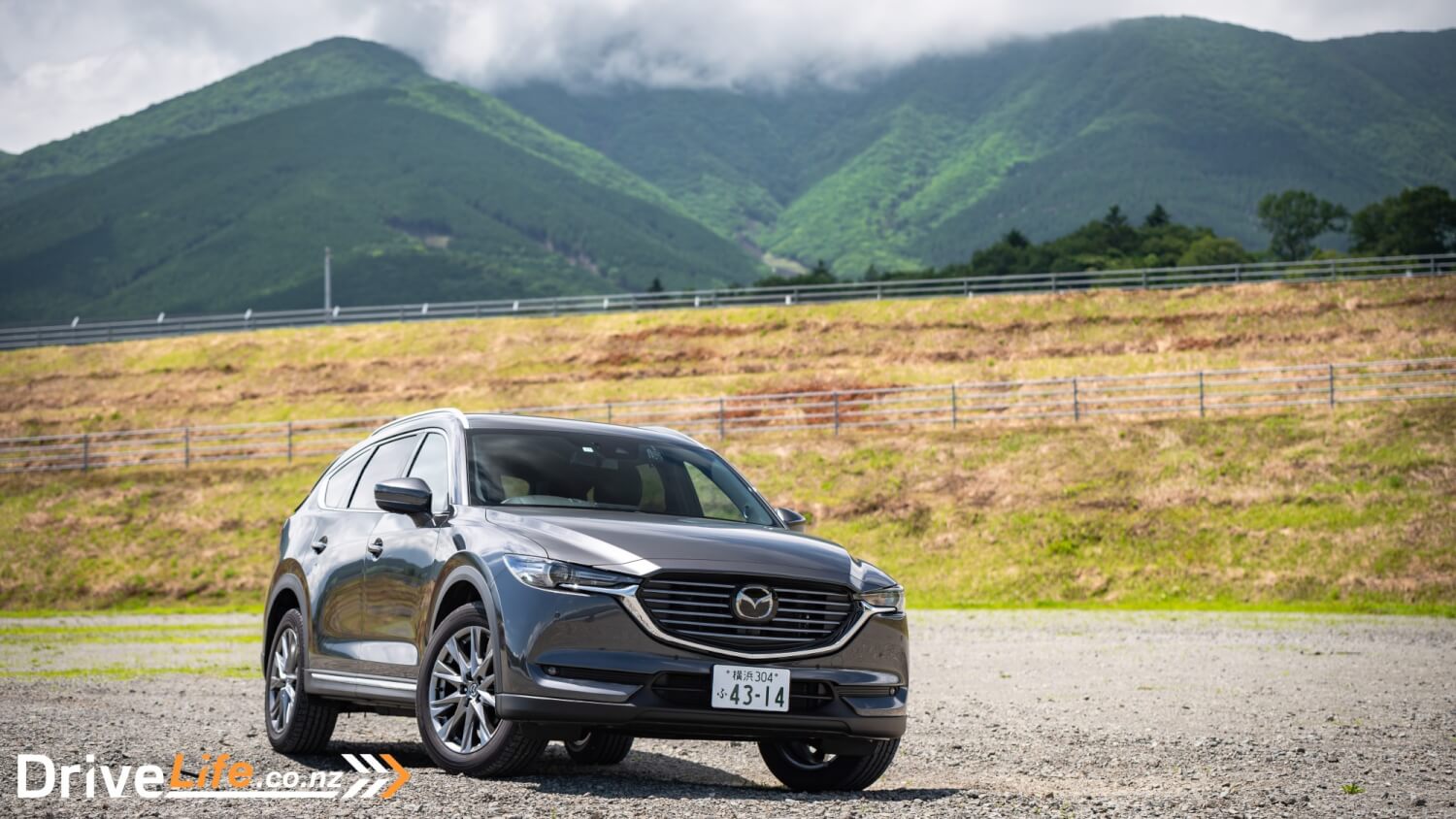It seems everyday there’s some new SUV or crossover being launched. The world just can’t get enough of them and consumers are spoilt for choice. In all honesty a lot of them are all very similar. It’s hard to pick them apart as they’re usually just as dull and uninspiring.
That’s why I’ve always liked Mazda’s crossovers. They offer handsome styling, decent driving dynamics, and an interesting looking interior that’s also actually quite practical. From the CX-7 with that silly 2.3-litre turbocharged engine to the current CX-5 which is quite possibly one of the best all-rounders out there at the moment, Mazda can do no wrong.
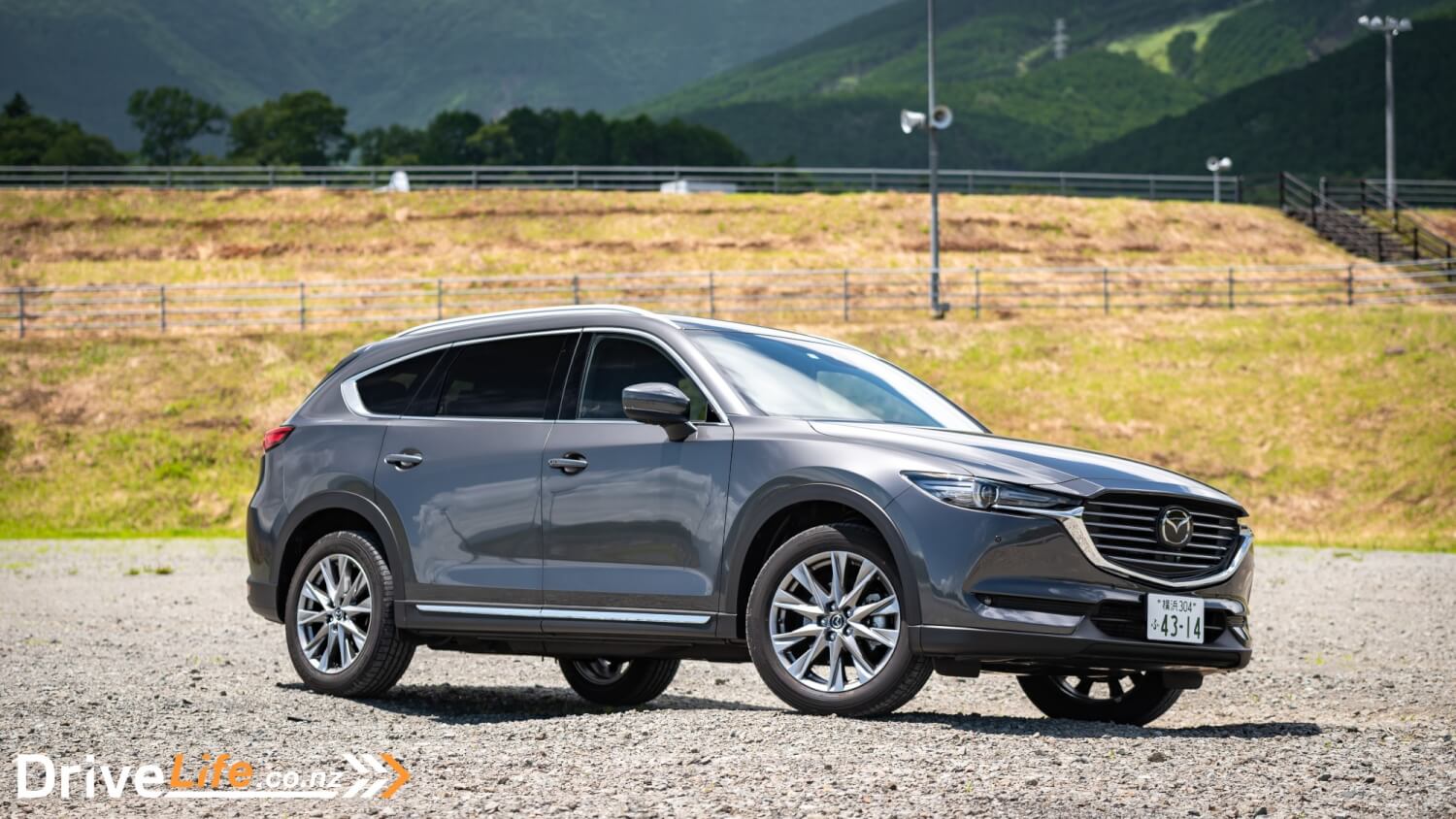
They already have a decent crossover lineup in the form of the CX-3, CX-5, and CX-9, the latter being their biggest with 7-seats. The CX-8 fits awkwardly between the 5 and 9, feeling more like a CX-5 XL than a downsized CX-9. Originally designed as a Japan-market only crossover, much like how the CX-4 is a Chinese market only crossover, demand for Mazda crossovers in right-hand drive countries such as Australia and New Zealand were so high Mazda decided to export the CX-8.
It’s been on sale in its home market since December 2017 but will be hitting New Zealand shores very soon. We’ve already covered it at its local launch and will be doing a full road test on Kiwi roads in the near future. But before that I wanted to check out how it coped on the roads it was originally designed for.
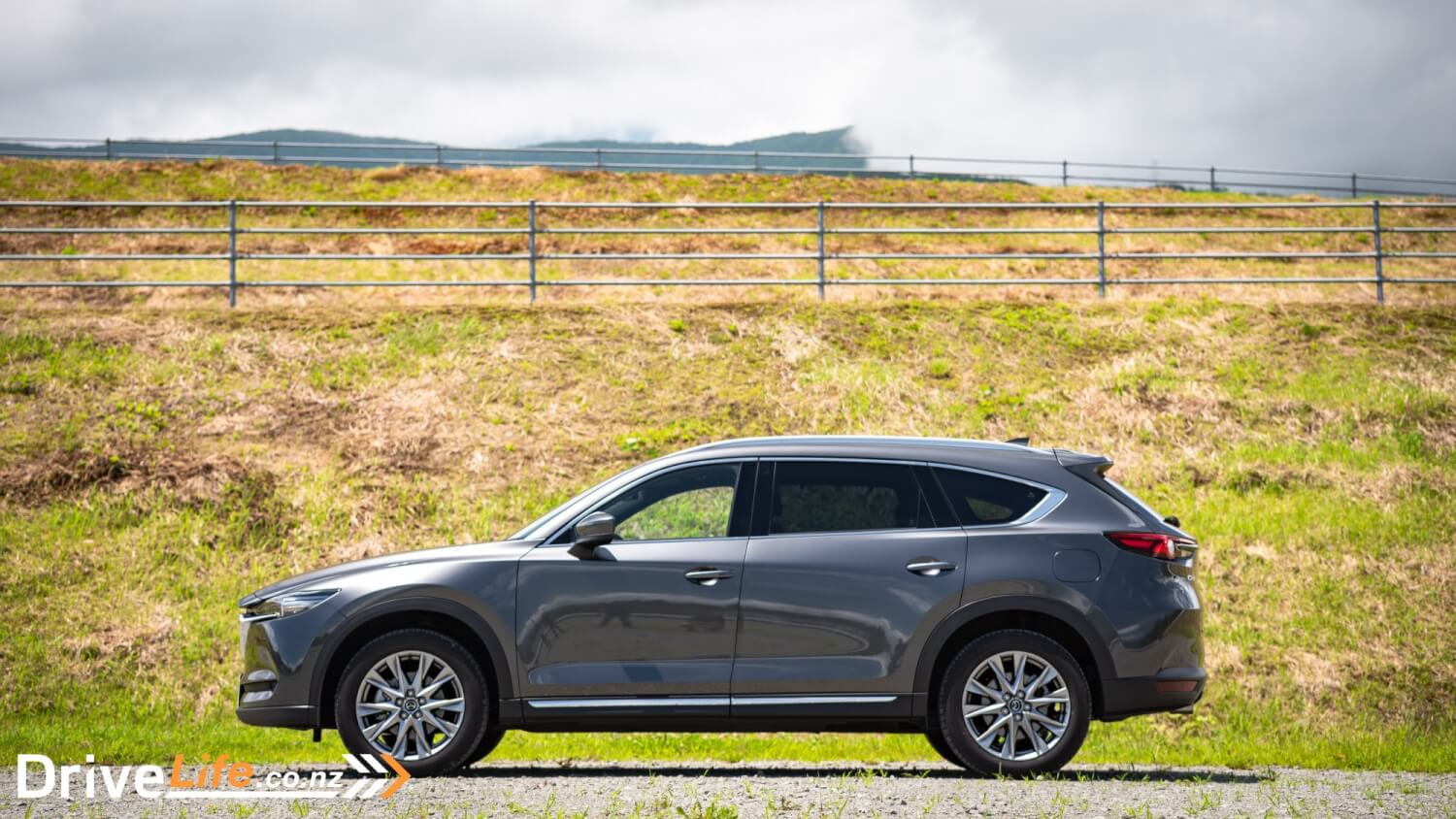
So What’s the Difference?
Apart from their size, the biggest difference is what’s under the bonnet. The 9 is only offered with a 2.5-litre turbocharged petrol engine, which is all nice and lovely, if not a bit thirsty. There’s no diesel option though I’m not sure how difficult it would be to have just stuck their 2.2-litre diesel into the 9 instead of going out and making a whole new model instead.
The CX-8 on the other hand only comes with Mazda’s tried and tested 2.2-litre turbocharged diesel. Like in other Mazda cars it produces 140kW and 400NM of torque. The CX-8 is the same width as the CX-5 but is 350mm longer and 200kg heavier. The width is important because that’s why Mazda never thought to sell the CX-9 in Japan, because that was designed with American roads in mind and would be too wide for most Japanese parking spaces. Having the CX-8 the same width as the CX-5 gets around this problem.
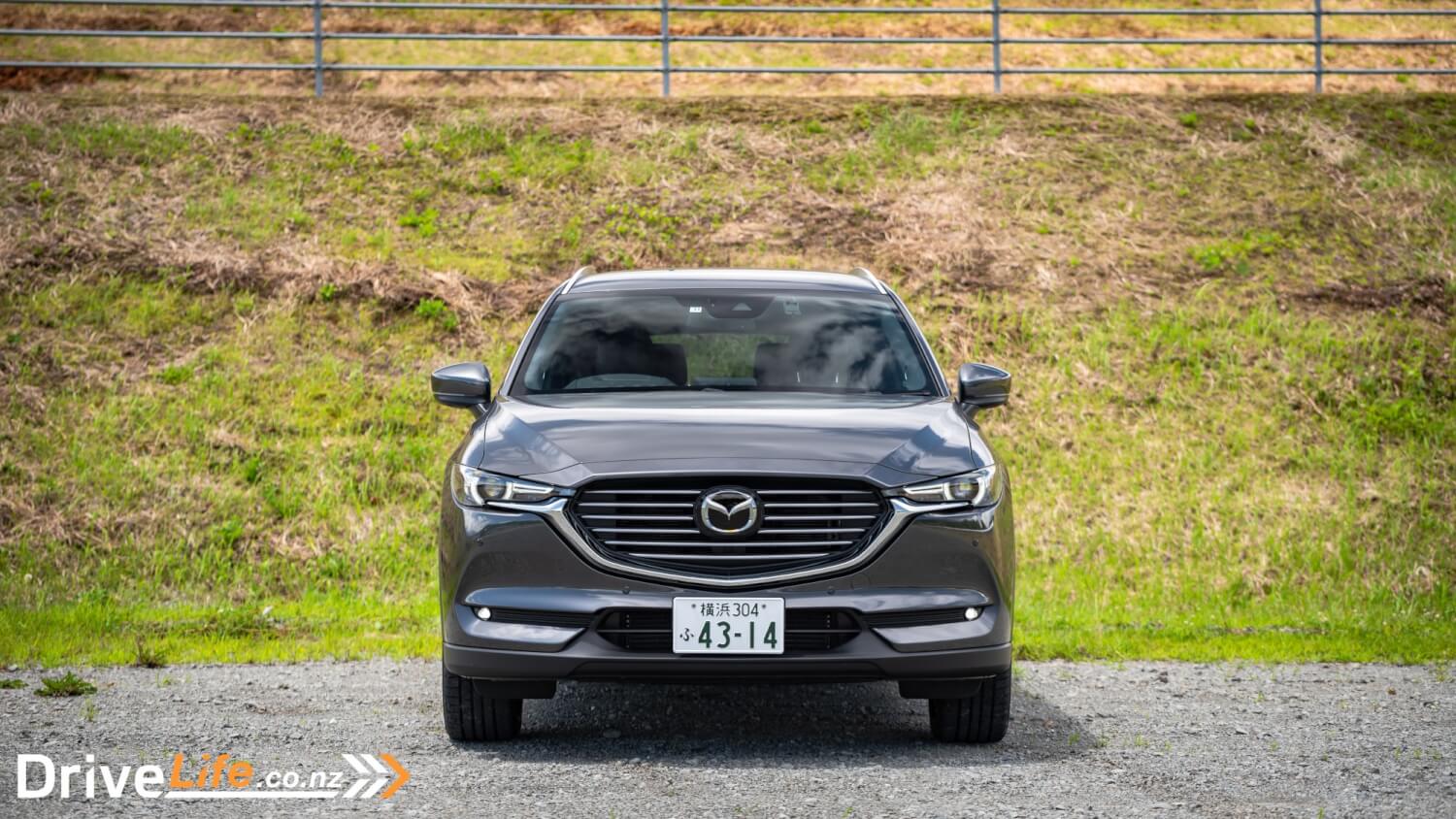
Stretching it out wasn’t much of an issue as it’s still under the 5m mark. The extra length only really became noticeable when it was time to park the CX-8. Luckily there’s a neat 360-degree view camera and sensors to help. Steering was nice and light too which was great for driving around town.
What’s it like to drive?
Much like the CX-5. Okay, it’s not as nimble or as quick because of the extra size and weight but it’s not bad either. The engine pulls well and still remains a decent mainstream diesel choice. It’s economical, has more than enough grunt, and isn’t too rattly at idle.
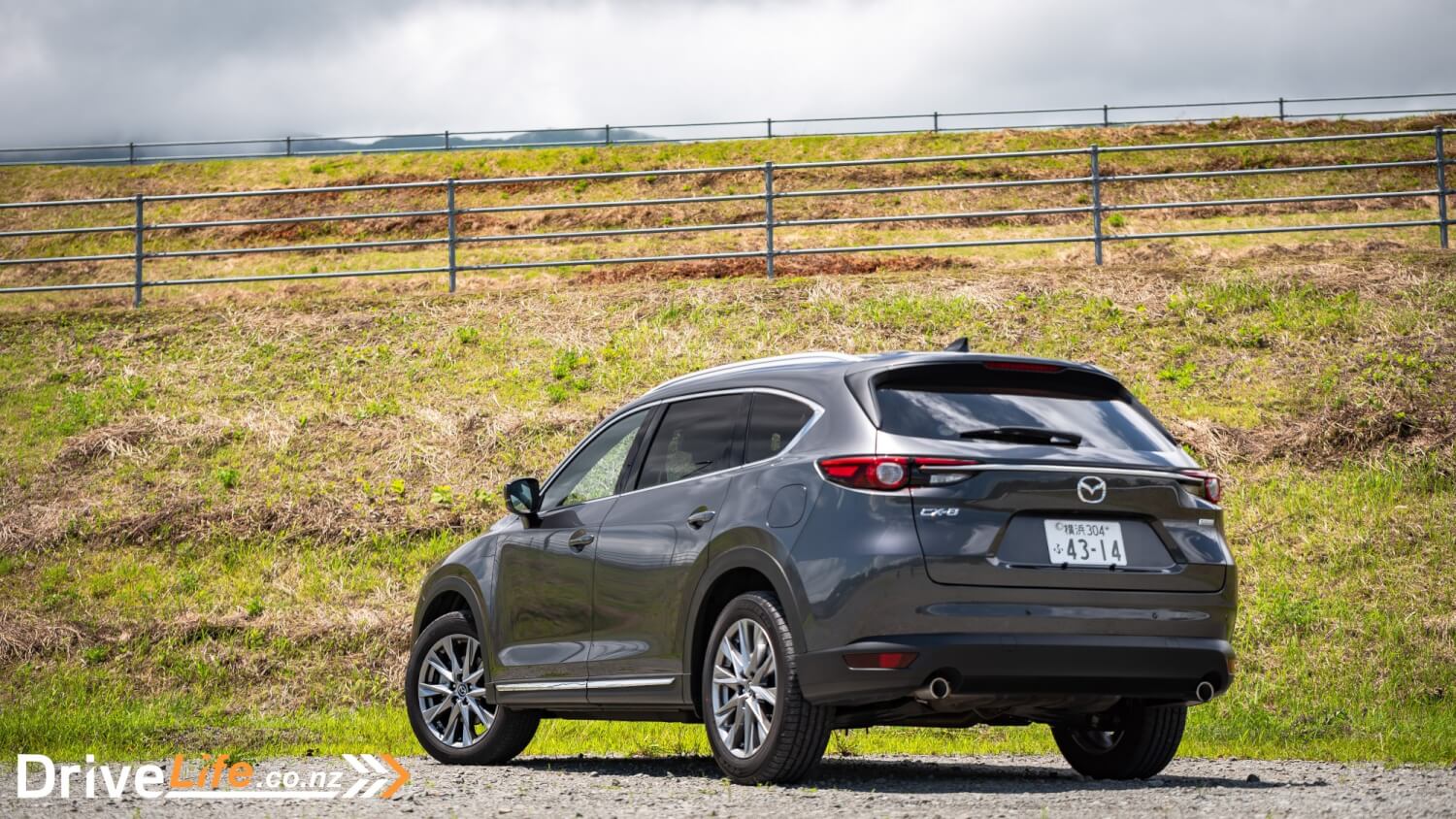
Around corners the CX-8 does well in terms of body roll, it doesn’t lean like a minivan or a bigger SUV. It felt very car-like and solid. Even at higher speeds, not that you’d be speeding with your family inside, it was stable and controllable. There’s a nice European chunkiness about Mazdas I really like.
In the city, and let’s face it this where it’ll spend most of its time, the CX-8 does very well. It soaks up bumps well and because of the high seating position you get a nice view out. There’s little in the way of blind spots except for the rather intrusive D-pillar. Luckily there’s the usual array of driver aids such as blind spot assist and large wing mirrors to compensate for that.
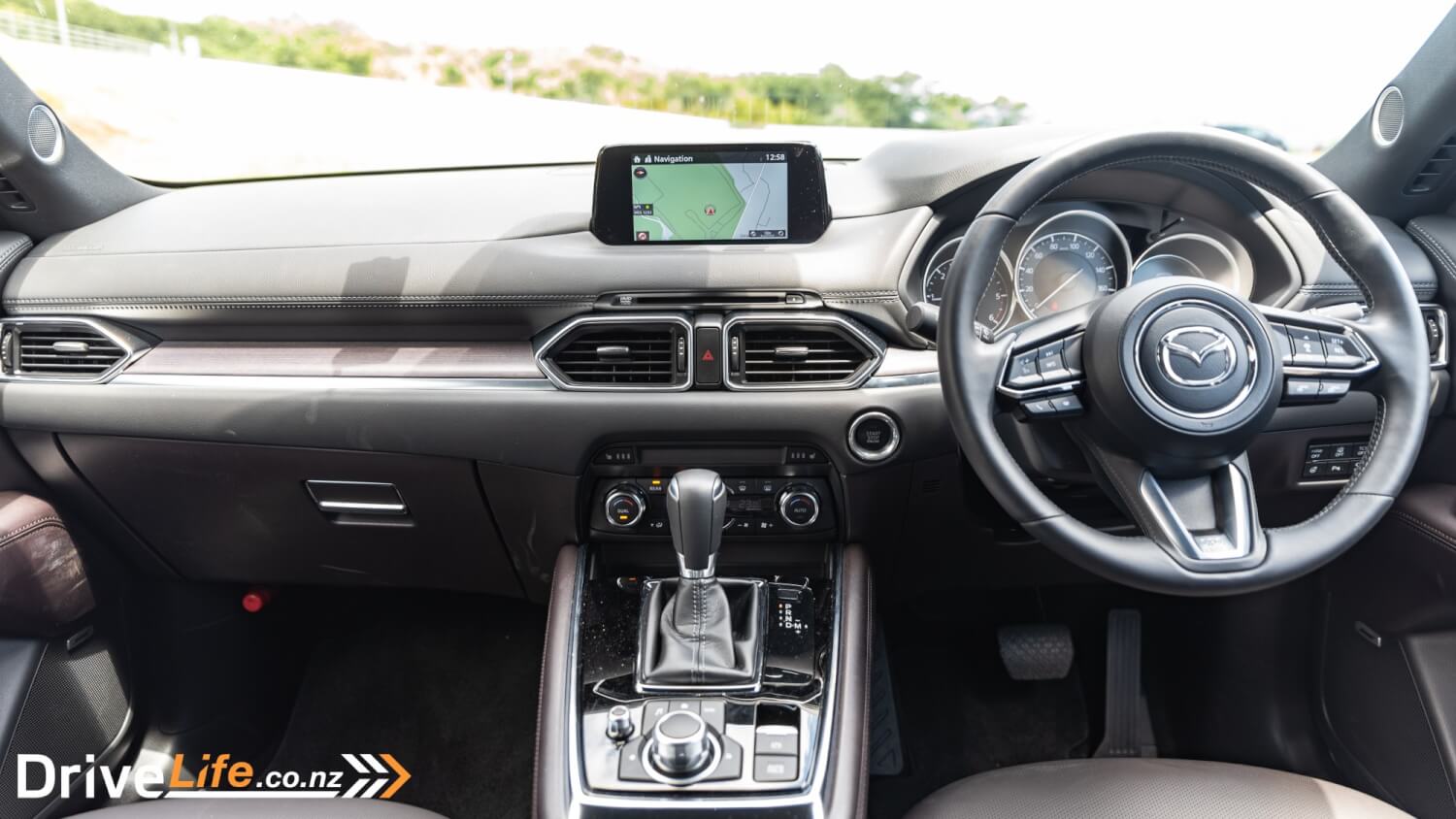
Everything else is business as usual for Mazda. There’s the intuitive MZD Connect infotainment system that can be controlled via rotary dial on the centre console or with the touchscreen. There’s an updated heads-up display that’s now an actual HUD unit rather than a flip up plastic screen as seen in other Mazdas. This new HUD will be phased into other Mazda products soon.
Can I fit people in the back?
Japan-spec CX-8s come with a choice of 6 or 7 seats, Kiwi-bound CX-8s will only come with 7 seats. My test car had was the 6 seater which had two captain chairs in the second row. Even with this it didn’t feel any less practical. Getting into the third row was easy and unlike many 7 seater crossovers there’s actually space there for adults.
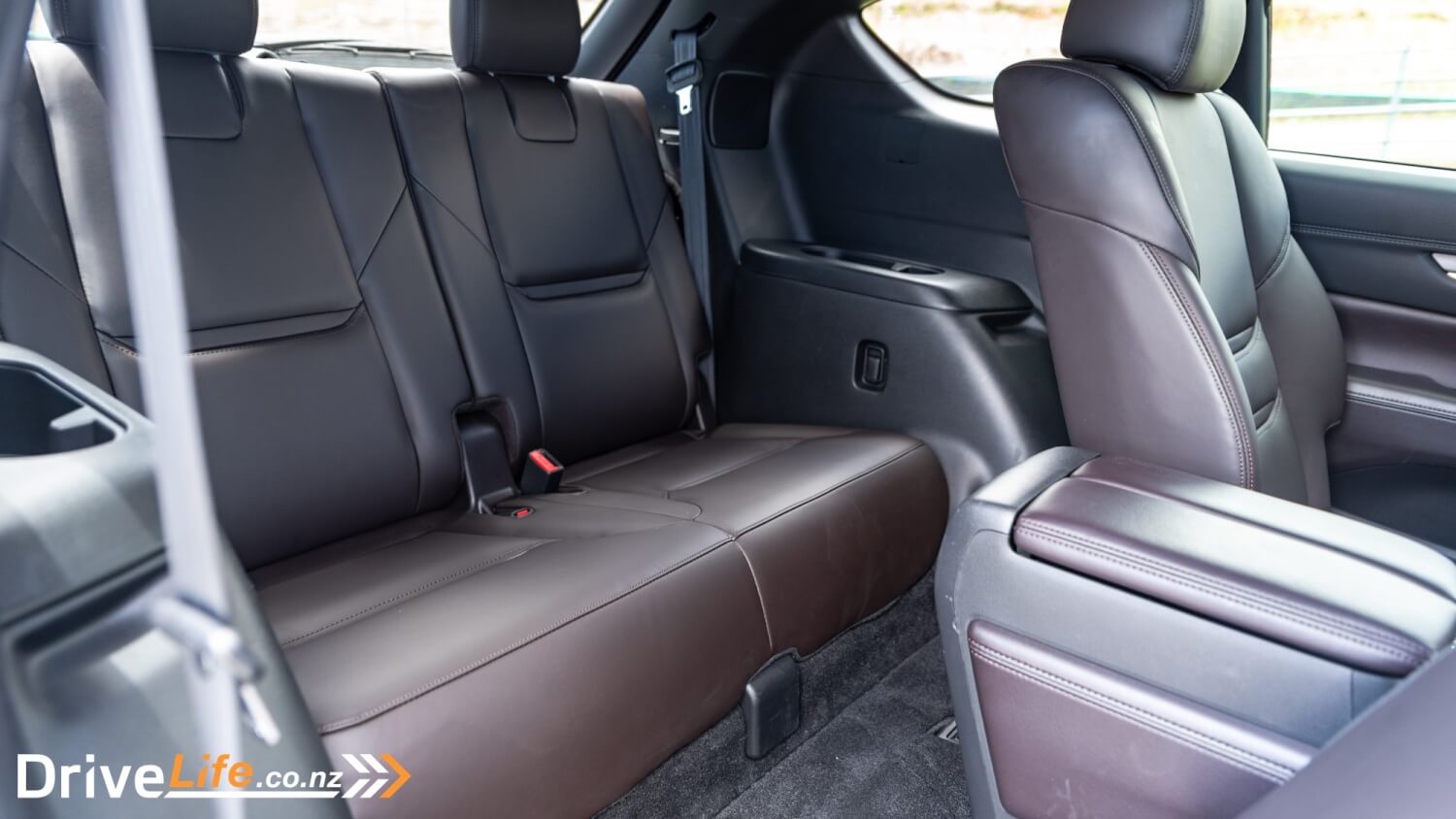
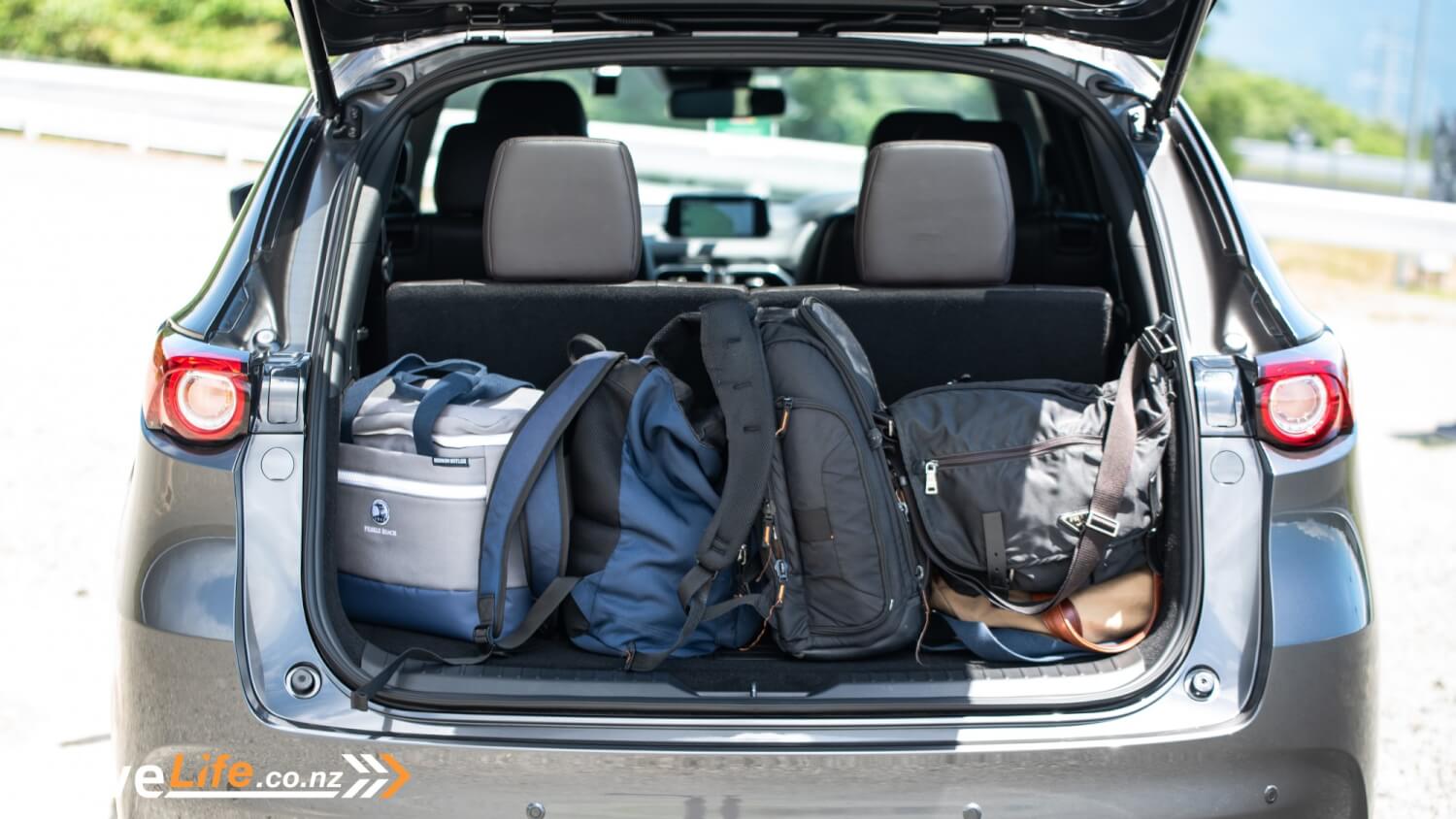
I filled up the car 6 adults and on a 400 kilometre road trip there wasn’t any complaints about space of comfort from the passengers in the back. With all three rows up the luggage capacity in the back is a decent 209 litres, which was enough for 6 backpacks. The luggage space can be expanded to 742 litres at the expense of the rear seats being folded down.
In many ways the CX-8 felt like a minivan in a better looking package. I mean that in the nicest sense; it’s practical, usable, but without the dreary image associated with vans. If it works fine in Japan then there’s no doubt it’ll be able to take on whatever Kiwi families throw at it. But of course, we’ll be able to find out when we get a chance to do a full road test of it on New Zealand roads.
